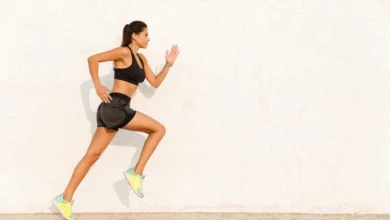How long would the workout take?

How long would the workout take? Embarking on a fitness journey often raises questions about time commitment specifically, how long a workout should ideally take to achieve desired results. The duration of a workout can vary significantly based on individual goals, fitness levels, and exercise preferences. Factors like intensity, type of exercise, and personal schedule all play roles in determining the ideal workout duration. Let’s delve into these factors to understand how long a workout might take and how to optimize time for effective fitness routines.
It’s important to note that the effectiveness of a workout is not solely determined by its duration but also by the quality of exercise and intensity. Shorter, high-intensity workouts can be equally effective for burning calories and improving fitness levels as longer, moderate-intensity sessions. Ultimately, the ideal duration of a workout depends on individual fitness goals, time availability, and personal preferences. It’s recommended to consult with a fitness professional or trainer to tailor a workout routine that suits your specific needs and lifestyle.
Understanding Workout Goals
The first step in determining workout duration is to clarify fitness objectives. Are you aiming to build muscle, improve cardiovascular health, lose weight, or enhance flexibility? Each goal may require a different approach and duration. For instance, resistance training sessions for muscle building could typically range from 45 minutes to an hour, whereas high-intensity interval training (HIIT) for weight loss might be effective in shorter bursts, around 20 to 30 minutes.
Type of Exercise
The type of exercise significantly influences workout duration. Here are some common types and their typical durations:
- Cardiovascular Exercise: Cardio workouts like running, cycling, or swimming can range from 20 minutes to an hour, depending on intensity and fitness level.
- Strength Training: Weightlifting or resistance exercises may take 30 minutes to an hour, focusing on different muscle groups.
- HIIT (High-Intensity Interval Training): HIIT workouts are usually shorter, around 20 to 30 minutes, due to their intense nature.
Intensity Levels
Workout duration is closely linked to exercise intensity. Higher-intensity workouts often mean shorter durations due to increased effort and energy expenditure. For example, a moderate-paced run might last longer than a high-intensity sprint session. Tailoring intensity to fitness goals and time availability is crucial for maximizing workout efficiency.
Frequency
Another key consideration is how often you work out. If you have limited time per session, you might compensate by exercising more frequently throughout the week. Shorter, more frequent workouts can be effective for busy schedules and maintaining consistency. The duration of a workout can vary depending on several factors, including the type of exercise, intensity, fitness goals, and personal schedule. Generally speaking, workouts can range anywhere from 20 minutes to over an hour.
Personal Schedule and Lifestyle
The ideal workout duration also depends on your daily schedule and lifestyle. Some people prefer shorter, more intense workouts that fit into busy days, while others may have more flexibility for longer sessions. Adapting workouts to personal schedules ensures sustainability and adherence to fitness routines.
Optimizing Time
To make the most of workout time, consider the following tips:
- Plan Efficiently: Outline specific exercises and their durations in advance.
- Prioritize Compound Movements: Focus on exercises that target multiple muscle groups simultaneously.
- Utilize HIIT: Incorporate high-intensity intervals to maximize calorie burn in shorter timeframes.
- Minimize Rest: Keep rest periods short between sets to maintain intensity.
- Incorporate Circuits: Create circuits combining different exercises to optimize time and engagement.
Individual Factors
Lastly, individual factors such as fitness level, age, and overall health influence workout duration. Beginners might start with shorter sessions and gradually increase the duration as fitness improves. Listening to your body and adjusting workout length accordingly is key to preventing overexertion or burnout.
The duration of a workout can vary significantly based on individual goals, fitness levels, and exercise preferences. Factors like intensity, type of exercise, and personal schedule all play roles in determining the ideal workout duration. Let’s delve into these factors to understand how long a workout might take and how to optimize time for effective fitness routines.
Conclusion.
In conclusion, the duration of a workout can vary widely based on fitness goals, exercise type, intensity, and personal schedule. There is no one-size-fits-all answer to how long a workout should be. Instead, it’s important to tailor workouts to individual needs and preferences while ensuring consistency and efficiency. Shorter, high-intensity workouts can be equally effective for burning calories and improving fitness levels as longer, moderate-intensity sessions. Ultimately, the ideal duration of a workout depends on individual fitness goals, time availability, and personal preferences.
It’s recommended to consult with a fitness professional or trainer to tailor a workout routine that suits your specific needs and lifestyle. By understanding these factors and optimizing workout routines accordingly, achieving fitness goals becomes more attainable within realistic timeframes. The key is to find the right balance that works for you, promoting overall health and well-being through regular physical activity.




